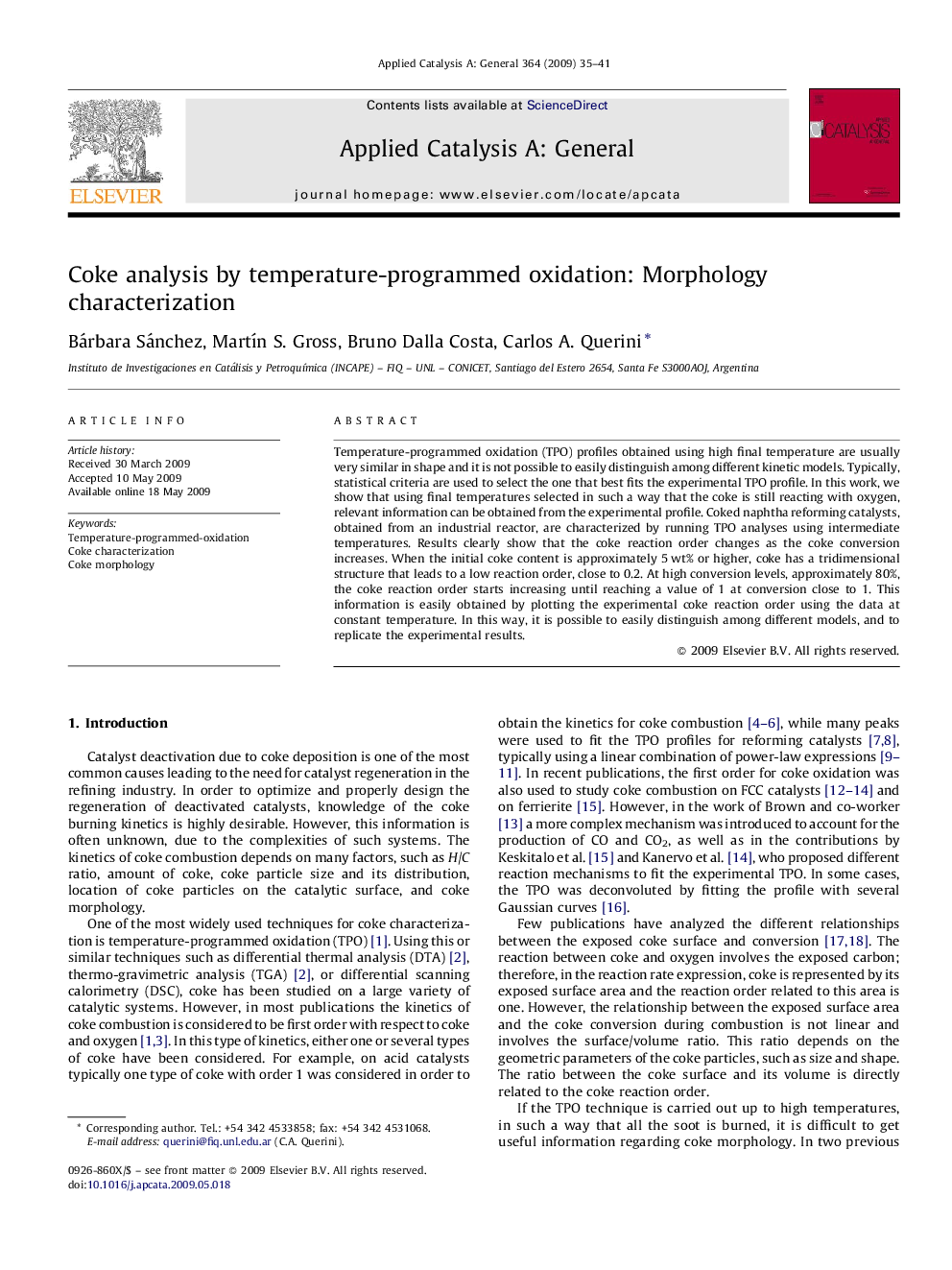| Article ID | Journal | Published Year | Pages | File Type |
|---|---|---|---|---|
| 42859 | Applied Catalysis A: General | 2009 | 7 Pages |
Temperature-programmed oxidation (TPO) profiles obtained using high final temperature are usually very similar in shape and it is not possible to easily distinguish among different kinetic models. Typically, statistical criteria are used to select the one that best fits the experimental TPO profile. In this work, we show that using final temperatures selected in such a way that the coke is still reacting with oxygen, relevant information can be obtained from the experimental profile. Coked naphtha reforming catalysts, obtained from an industrial reactor, are characterized by running TPO analyses using intermediate temperatures. Results clearly show that the coke reaction order changes as the coke conversion increases. When the initial coke content is approximately 5 wt% or higher, coke has a tridimensional structure that leads to a low reaction order, close to 0.2. At high conversion levels, approximately 80%, the coke reaction order starts increasing until reaching a value of 1 at conversion close to 1. This information is easily obtained by plotting the experimental coke reaction order using the data at constant temperature. In this way, it is possible to easily distinguish among different models, and to replicate the experimental results.
Graphical abstractTemperature-programmed oxidation technique may provide useful and unique information regarding coke morphology and kinetics parameters, as long as the experiment is carried out up to intermediate final temperature. This experimental design makes it possible to distinguish how the coke reaction order changes as a function of coke conversion, and replicate complex kinetics behavior such as those found in catalyst with high level of coke, e.g. 14 wt%, as shown in the figure.Figure optionsDownload full-size imageDownload as PowerPoint slide
